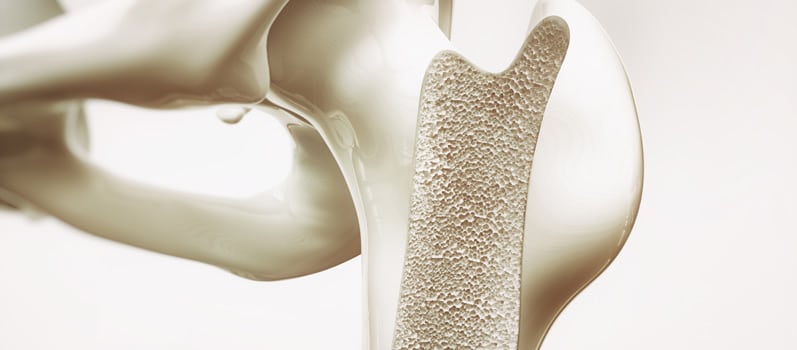
Recovering from Minimally-Invasive Back Surgery
For patients undergoing back surgery, it is normal to be curious about the process of recovery and what you should expect.
Immediately after surgery, patients are usually observed for a short time after in a recovery area. If the surgery was performed in a hospital, the patient may need to stay for one to two days before being cleared to go home. If the surgery was performed with any other procedures simultaneously, the stay could be longer. For example, a microlaminectomy may be performed along with removal of a damaged disc, or with fusion surgery to restore spinal stability.
Will I Feel Better Right Away?
You might notice immediate relief from pain after surgery. For example, when compressed nerves are given more room. It’s also normal for discomfort to linger for a brief period of time while formerly compressed or irritated nerve roots heal. You might also experience tenderness in the area where the surgery was performed while you heal.
Recovery Time
A minimally invasive procedure, like a microlaminectomy, has the added benefit of allowing patients to get back to their daily routines and preferred level of activity sooner. Although, it will still be necessary to avoid excessive spinal stress to give tissues time to heal. In many instances, it’s also possible to get started with physical therapy sooner, which can lead to noticeable improvements with flexibility, mobility, and range of motion within the back and neck area.

The Basics of Stem Cell Therapy
The field of medicine is rapidly changing, and new treatment methods are always being developed.
A stem cell is a cell that can divide and become differentiated into another type of cell. Blood, muscle, bone, and nerves all have stem cells. In the past, only embryonic stem cells were used in research. Today, adult stem cells and umbilical cord blood are widely used.
How it Works
Scientists can specialize the cells to grow into a specific type, such as blood cells or heart muscle cells. Once enough cells are grown, they are injected into the patient. For instance, if a patient is suffering from heart disease, the cells can be injected into the heart. The hope of this treatment is that the new stem cells will start to grow and multiply, helping the diseased muscle to heal or regenerate. For orthopedic patients, stem cells may be injected into areas with injuries or where the patient is experiencing chronic pain.
Another method is a stem cell transplant. This is a bone marrow transplant, where the new stem cells are inserted into the patient’s bone marrow. The bone marrow can then produce new, healthy blood cells to replace those that have been killed off by disease or chemotherapy. This method can be used in treatment for leukemia, lymphoma, and other blood-related diseases.
Currently, there are a limited number of conditions that are approved by the FDA to be treated by stem cell therapy.
Are There Risks?
Stem cell therapy does come with some risks. These risks are typically minor, such as infection at the site of injection. There is also the possibility of the treatment not working.

4 Tips For Minimizing Repetitive Stress Injuries
Repetitive stress injuries are one of the most common types of injuries that people sustain at home and while working. With much of the world turning to computer-based work, repetitive injuries are on the rise. Even though these types of injuries are occurring more often, there are proactive steps people can take in order to reduce the risk or severity of these types of injuries. Many of these mentioned steps can be easily implemented.
Improve Posture
Sitting down at a desk or standing with incorrect posture can lead to a wide range of injuries. To remedy this, it is important to be conscious of how you sit or stand. When at a desk, be sure to sit up straight with your ears, hips and your shoulders aligned. This will put your spine in its natural position and limit the stress put on it. If you have trouble keeping a good posture, it may be worth it to purchase a balance ball. It will help to keep your body in a natural position and it will give your core some exercise at the same time.
Take Frequent Breaks
One of the more devastating aspects of today’s work culture is working long hours with lack of enough breaks during each shift. In order to combat repetitive stress injuries, it is essential to take at least a five-minute break each hour. Take that time to stand up, stretch and move around some. This will help alleviate the discomfort of sitting or standing in one place for hours on end and will give your mind a break. You will be physically and mentally refreshed when you get back to work.
Be Aware of Warning Signs
To reduce the risk of repetitive motion injuries, it is essential to be aware of warning signs. If you are working at a desk and your back begins to hurt, check your posture. If you are typing and your wrists begin to bother you, it may be time for a new wrist brace or other aid. A new chair that helps with posture might be all you need to reduce or eliminate your back, neck or wrist pain. Educating yourself on the warning signs can help you take necessary caution and prevent injuries from happening or getting worse.
Practice Safe Lifting
There are many jobs that require you to lift moderate to heavy objects over and over again. If not lifted properly, it can put a lot of strain on your legs and back. It is important to practice safe lifting techniques to protect your spine and back from repetitive stress injuries. Your weight needs to be kept close to your waist. Your legs should be doing the majority of the lifting. Do not lift with your back or arms. Even with lighter items, lifting with your back can really cause issues.
Many repetitive stress injuries can be treated with some rehabilitation. For worse cases of injury, surgery may be suggested. It is important to notice any signs of injury before it gets to that point.

Medication After Your Surgery
It is common to experience pain after surgery. Part of preparing for surgery is knowing what to expect after the procedure. To manage pain and provide comfort, there are a few options your doctor might suggest.
Pain Relievers
For some patients, medications, such as acetaminophen and ibuprofen are enough to make them comfortable. However, for moderate to severe pain, doctors might prescribe a short-term course of opioid pain medications. These may be given through an IV while the patient is in the hospital. Due to the dangers of addiction, prescriptions to take home are not as common.
Anticoagulants
All surgeries come with the potential risk of deep vein thrombosis and other types of blood clots. This is due to multiple factors, such as being sedentary during early recovery. Another possible cause of clots is the blood responding to foreign matter being released into the bloodstream during surgery, such as collagen, tissue debris and fat. When blood encounters this matter, it thickens in response. This process can result in coagulation. It is also possible for the body to release certain substances that encourage the blood to clot if soft tissues are moved or removed during surgery.
To prevent this potentially life-threatening problem, the doctor might prescribe a short-term course of anticoagulants.
Antibiotics
Every year, about 500,000 people who have surgery experience an infection. However, whether patients should be prescribed antibiotics after surgery is a subject of debate. Certain factors that make certain patients more vulnerable to infection might make these medicines an ideal option for some patients. Using antibiotics as a preventative measure within 24 hours of surgery may help to reduce the risk of infection.
In most cases, the antibiotics are only one dose unless the patient has special circumstances that may make them a high infection risk.
Stool Softeners
Those who are prescribed opioid medications may experience constipation. To help prevent this side effect, the doctor might recommend a stool softener. These medicines can make stool easier to pass by making it softer. This can make bowel movements more comfortable. In some cases, a laxative may also be beneficial. An example of a medicine that serves both purposes includes docusate sodium/sennosides.
Anti-Nausea Medications
It is possible to experience nausea when taking opioid pain medications. To control this side effect, the doctor might prescribe an anti-nausea medicine, such as ondansetron. This drug works to block certain chemical actions that can cause nausea. By controlling nausea, recovery is more comfortable, and patients are able to get the nutrients they need to recover.
Patients who have a history with any of these medications should make sure to let the doctor know. This is especially important for patients who have medication allergies.

Signs of a Concussion in Children
Younger children who experience some type of head trauma are often unable to verbalize symptoms in the same way as older children and adults can. For concussions affecting younger children, including infants and toddlers, it’s important to look for non-verbal signs and symptoms. The most noticeable of these symptoms is the appearance of being “out of it” or dazed. Some younger children may also exhibit changes in more subtle changes in personality, such as being increasingly irritable and cranky. Such changes may also involve excessive crying for no apparent reason. A general listlessness and unexplained fatigue or suddenly becoming tired easily may also be signs of a concussion. Some children with concussions also experience:
- A lack of interest in favorite activities or toys
- Noticeable changes in sleeping habits or patterns
- Unsteady walking or a loss of balance
- Changes in normal eating patterns
When to See a Doctor for a Concussion
Immediate medical treatment should be sought if a concussion is accompanied by a loss of consciousness lasting longer than 30 seconds, ongoing vomiting, severe headaches, and visible confusion or lack of coordination that includes stumbling and disorientation. If your child experienced a hard fall or impact and is immediately alert and appears to be functioning normally, the concussion is likely mild. Even so, it’s best to err on the side of caution and see a doctor for an initial evaluation.
A doctor will perform a thorough evaluation that include a physical exam, a discussion of what happened, and an assessment of reflexes and mental alertness. Confirmation of a concussion typically involves image tests such as an MRI or CT scan and a series of neurological tests to check strength and sensation and balance and coordination. Regardless of the degree of the type of symptoms you may be experiencing following a significant blow to your head, neck, or upper body, concussions should not be ignored.

Early Warning Signs of Osteoporosis
Since we are unable to see our bones without specialized medical tests, it can be hard to detect bone loss in its earliest stages. In general, there are no symptoms of osteoporosis. Many patients do not know that they have it until they experience a fracture. However, there are some signs you can watch for that could point to an underlying bone density problem.
If you are at increased risk of osteoporosis, you should get screened for the condition whether you have symptoms or not. Risk factors include taking glucocorticoids for more than three months, being deficient in vitamin D or calcium, or being a postmenopausal woman.
Discomfort
Muscle aches, bone pain, and cramps can all be signs of osteoporosis. More specifically, these issues can point to deficiency in vitamin D and other important minerals, which can lead to bone loss over time.
Reduced Grip Strength
A recent study showed that decreased hand grip strength was the most significant physical test factor in bone mineral density. You can work on improving your grip strength regardless of age.
Low Fitness Level
Bone loss has been connected to declined physical activity. If you were previously active and cut back, it is possible that your bone mass has gradually declined as well.
Height Loss
A loss in height or declining posture can point to osteoporosis. Make sure you check your height regularly to stay on top of any changes.
Strong bones are important, because they help you to stay active and flexible far into your older years. Talk to your doctor today about how to keep your bones healthy.








